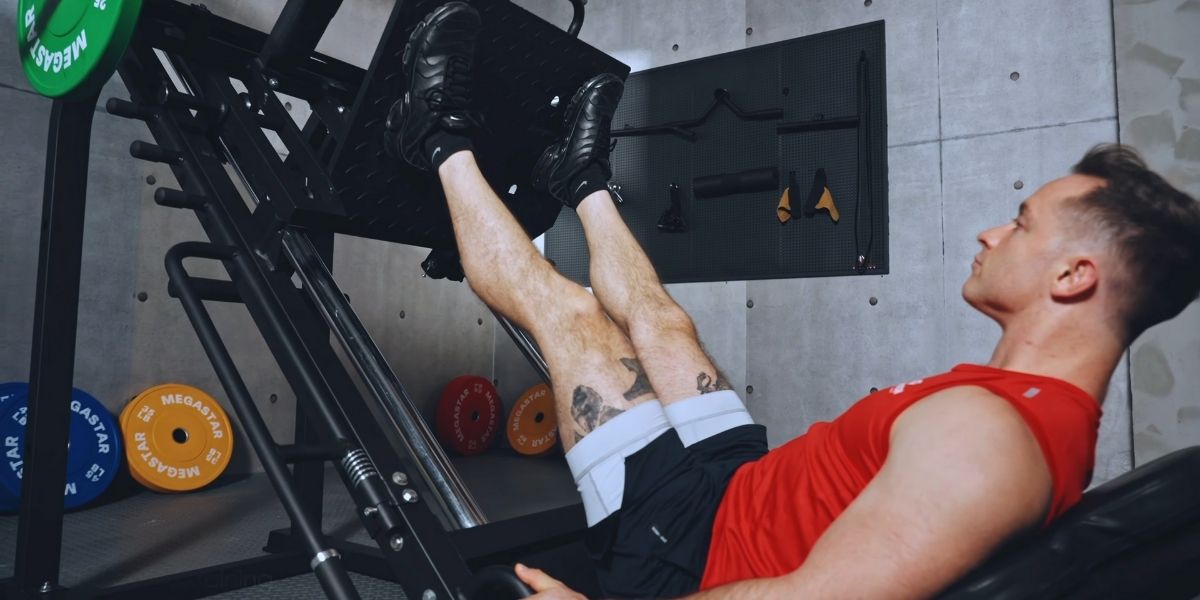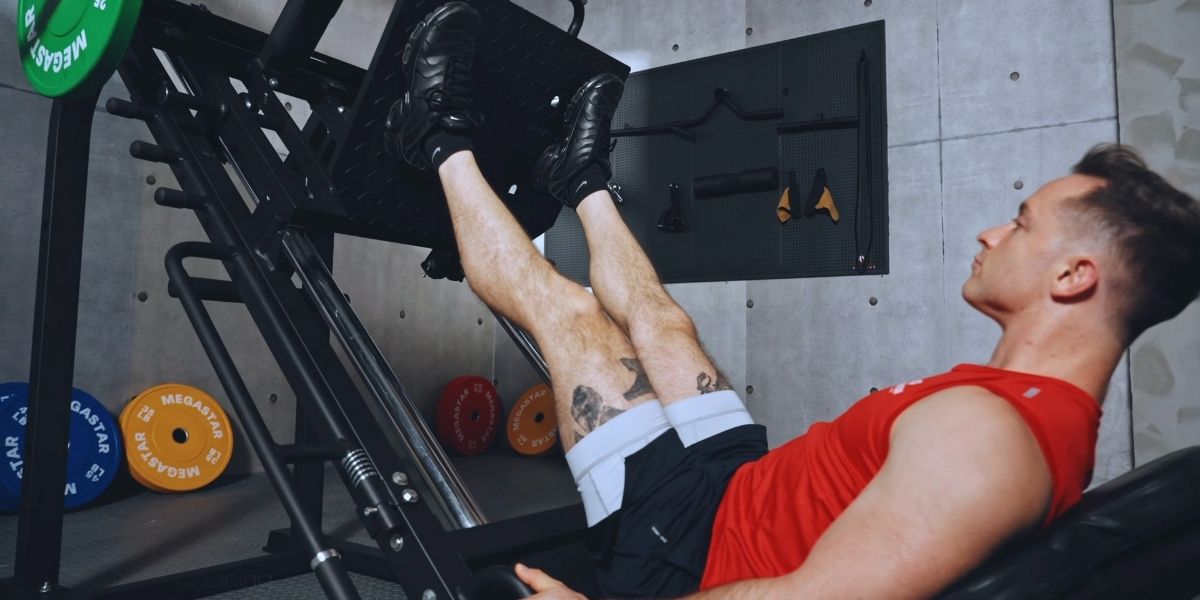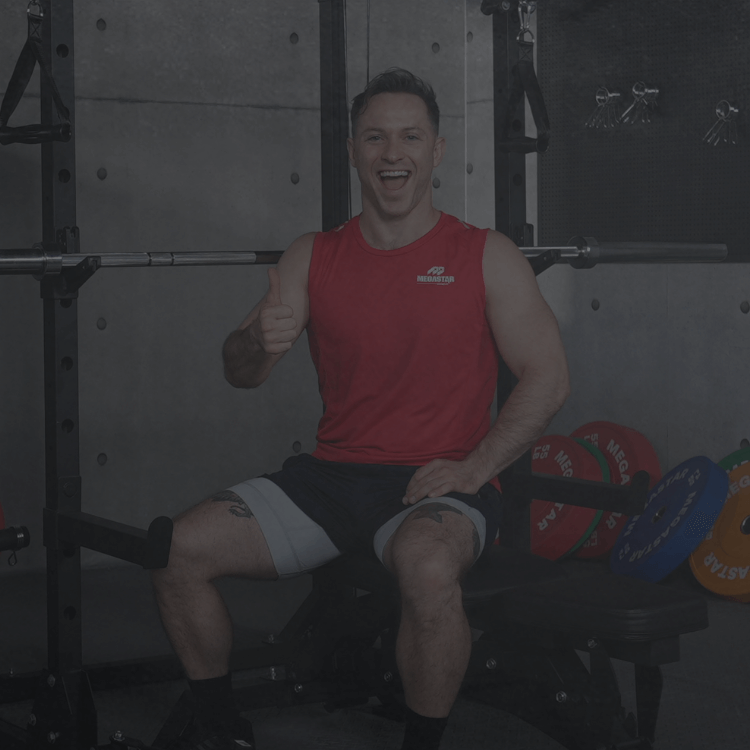You’ve seen it in every gym: the leg extension machine. It’s the go-to for isolating and building those impressive "teardrop" muscles in your quads (the vastus medialis). But let's be honest, you're probably here for one of two reasons: you don't have access to one, or using it just doesn't feel great on your knees. That’s a common problem. While the machine has its place, it can put a lot of shearing force on the knee joint.
This article is your guide to building powerful, defined quads without that specific machine. We'll explore 9 effective alternatives that are often safer, more functional, and accessible to everyone, from home beginners to advanced gym-goers.
Why Leg Extension Alternatives Matter For Quads
Ditching the machine doesn't mean ditching your quad goals. In fact, you might get better results. The quadriceps are a group of four muscles on the front of your thigh. Their main job is to straighten your knee, but they also play a key role in flexing your hip.
Here’s the deal: Most real-world movements (like getting out of a chair, "functional strength") require your quads, glutes, and hamstrings to work together as a team. The leg extension machine isolates the quads, which is like training your lead singer without the rest of the band.
9 Quad Extension Alternatives That Actually Work
Here are nine fantastic exercises to target your quads, ranging from gym-ready to equipment-free.
Heavy Resistance Bike
- Why it targets your quads: Cycling is all about the "push." When you crank the resistance up, your quads have to work incredibly hard to push the pedal down with every single revolution. It's like doing hundreds of single-leg presses.
- Gear needed: A stationary bike with adjustable resistance (an indoor cycle, fan bike, or smart trainer).
- Quick form tips:
This isn't a "spin" class. Crank the resistance up until it feels like you're grinding through wet cement.
Stay seated in the saddle to keep the focus on your legs, not your body weight.
Focus on the push phase of the pedal stroke.
Spanish Squat
- Why it targets your quads: This is a hidden gem. The resistance band pulls your shins back, which allows you to sit straight down while keeping your shins perfectly vertical. This removes the hips and hamstrings from the equation and puts 100% of the load directly onto your quads.
- Gear needed: A heavy-duty resistance band (or "superband") and a sturdy anchor (like a squat rack or pole).
- Quick form tips:
Loop the band around a post at knee height. Step into the loops and place them just behind your knees.
Walk backward until there is strong tension on the band.
Keeping your torso upright, sit your hips straight down. Your shins should not move.
Squeeze your quads to stand back up.

Sissy Squat
- Why it targets your quads: Don't let the name fool you; this is one of the most intense bodyweight quad exercises. It isolates the quads by having you lean back, forcing your quads to control your entire body weight as your knees travel forward.
- Gear needed: None (though a wall or post for balance is highly recommended to start).
- Quick form tips:
Stand with your feet shoulder-width apart. Rise up onto your toes.
Hold onto a post or wall for balance.
Keeping a straight line from your knees to your head, lean your entire body back as you drop your knees toward the floor.
Go as low as you can control, then squeeze your quads to pull yourself back to the starting position.
Reverse Nordic Curl
- Why it targets your quads: This is a powerful eccentric exercise, meaning the muscle works while it lengthens. You control your body as you "fall" backward, forcing your quads (especially the rectus femoris, which crosses the hip) to fire like crazy to slow you down.
- Gear needed: A soft mat or pad for your knees.
- Quick form tips:
Kneel on a pad with your torso upright. You can hook your feet under a bench for support if needed.
Keep your hips extended (don't sit back on your heels).
Slowly lean your torso backward, maintaining that straight line from knee to head.
Go back as far as you can control, then use your quads to pull yourself back up (or use your hands to push off the floor if needed).
Wall Sit
- Why it targets your quads: This is an isometric hold, meaning your muscles are contracting without moving. Your quads are under constant tension to hold your body in the 90-degree "squat" position, building incredible muscular endurance and strength.
- Gear needed: A sturdy wall.
- Quick form tips:
Lean your back flat against a wall.
Slide down until your thighs are parallel to the floor, with a 90-degree bend at your hips and knees.
Make sure your knees are stacked directly over your ankles, not drifting forward.
Hold for time (e.g., 30-60 seconds).
Bulgarian Split Squat
- Why it targets your quads: This single-leg exercise places a massive load on your front leg. By adjusting your setup, you can make it extremely quad-dominant. It’s a gold-standard exercise for building single-leg strength, stability, and quad size.
- Gear needed: A bench, box, or sturdy chair. Dumbbells or kettlebells are optional for adding weight.
- Quick form tips:
Place the top of your back foot on the bench. Hop your front foot out so you're in a comfortable lunge stance.
To make it more quad-focused, keep your front foot a bit closer to the bench and allow your knee to travel forward over your toes.
Keep your torso mostly upright and drop your back knee straight down toward the floor.
Drive through your whole front foot to stand back up.

Step-Up
- Why it targets your quads: A simple, powerful, and functional movement. You are using your front leg's quad strength to lift your entire body weight onto a platform.
- Gear needed: A sturdy box, bench, or step. Dumbbells are optional.
- Quick form tips:
Plant your entire foot on top of the box.
Drive through that top leg, pushing into the box to lift yourself up.
Try to use as little momentum or "push-off" from your bottom leg as possible.
Control the movement as you lower your other foot back to the floor.
Reverse Lunge
- Why it targets your quads: While all lunges hit your quads, the reverse lunge is often easier on the knees. Stepping back puts the braking and pushing emphasis squarely on your stationary front leg, loading the quad.
- Gear needed: None (or hold dumbbells/kettlebells).
- Quick form tips:
Stand tall. Step one foot back and drop your back knee toward the ground, creating 90-degree angles with both legs.
Keep most of your weight (80-90%) on your front foot.
Drive through your front heel and midfoot to return to the starting position.
Dumbbell Leg Extension
- Why it targets your quads: This is the most direct way to mimic the machine at home or in a crowded gym. You are still isolating the quads, but you are using a dumbbell instead of a pin-loaded weight stack.
- Gear needed: A dumbbell and a flat bench.
- Quick form tips:
Sit tall on the edge of a bench.
Squeeze a dumbbell vertically between your feet.
Extend your legs, squeezing your quads at the top.
Slowly and with control, lower the dumbbell back down. Do not let it just drop.
Choose the Right Leg Extension Alternative at Home
Feeling overwhelmed by the options? Many of the most effective home alternatives, like Bulgarian Split Squats, Step-Ups, and Dumbbell Leg Extensions, require one key piece of gear: a stable, reliable bench.
The Foundation of Your Home Gym

Before you can effectively use many of these exercises, you need a solid foundation. An adjustable weight bench is arguably the most versatile piece of equipment you can own. For example, the Adjustable Weight Bench from Megastar Fitness not only provides a stable base for your step-ups and split squats but also includes 9 backrest positions and 4 seat positions, allowing you to get the perfect angle for any movement. Investing in a quality bench unlocks dozens of new exercises for your entire body, making it a cornerstone for any serious home gym.
Now, use this table to pick the right starting point for your goals and equipment
|
Exercise |
Best For... |
Gear Needed |
General Knee-Friendliness |
|
Wall Sit |
Isometric endurance, beginners |
Wall |
Very High |
|
Reverse Lunge |
Overall strength, stability |
None |
High |
|
Bulgarian Split Squat |
Building size & strength |
Bench / Chair |
Medium (form is key) |
|
Step-Up |
Functional power, strength |
Box / Step |
High (on a low box) |
|
Sissy Squat |
Pure quad isolation |
None (wall for balance) |
Low (requires healthy knees) |
|
Reverse Nordic Curl |
Eccentric strength, joint-proofing |
Pad |
Medium (can be intense) |
|
Spanish Squat |
Pain-free quad isolation |
Band, Anchor |
Very High |
|
Dumbbell Extension |
Mimicking the machine |
Dumbbell, Bench |
Medium |
|
Heavy Resistance Bike |
Low-impact endurance & strength |
Stationary Bike |
Very High |
Wrap Up: Choose Your Leg Extension Alternative And Start Today
Pick two movements that fit your space and knees, run them twice per week for four weeks, and track reps, depth, and how your quads feel at the end of each set. If your knees feel off, switch to the knee-friendlier options and shorten the range for a week. Keep it simple, be consistent, and your quads will tell you you’re on the right track.
FAQs About Finding the Right Alternative for Leg Extensions
Can I Build Big Quads Without Leg Extensions?
Yes. Deep knee-dominant patterns (Bulgarian Split Squats, Sissy Squats, Reverse Nordics, Spanish Squats) plus smart tempos and near-hard sets will grow quads effectively.
What’s The Best Quad Extension Alternative At Home With No Equipment?
Start with Wall Sits and Reverse Lunges. If you have a strap or towel, add Spanish Squats for a strong, knee-friendly quad hit.
Are These Alternatives Good For Beginners?
Absolutely. Begin with low impact, stable choices (Wall Sit, Step-Up, Reverse Lunge, Spanish Squat), use partial range as needed, and progress gradually with reps, then load.







